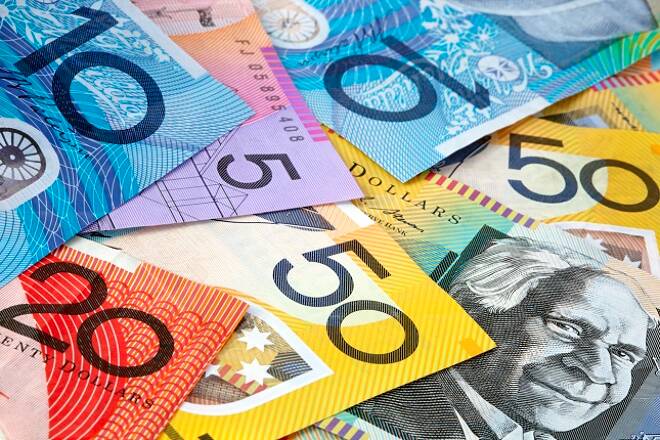Advertisement
Advertisement
Aussie CPI Misses Forecast, API Reports Bigger Than Expected Gasoline Inventories Draw
By:
Australia’s second quarter consumer price inflation (CPI) came in lower-than-expected. Quarterly Trimmed Mean CPI – of more importance to official interest rate settings from the RBA – rose by 0.5% for the quarter, matching expectations. The American Petroleum Institute (API) reported a crude draw of 3.16 million barrels of United States crude oil inventories for the week-ending July 21, compared to analyst expectations for a smaller draw in crude oil inventories of 2.331 million barrels. The API also reported a huge draw in gasoline inventories.
The AUD/USD is trading lower early Wednesday following a weaker-than-expected consumer inflation report. Additionally, a late session U.S. private industry report is helping to underpin U.S. West Texas Intermediate and international benchmark Brent crude oil.
Australia’s second quarter consumer price inflation (CPI) came in lower-than-expected. According to the Australian Bureau of Statistics (ABS), headline CPI grew by 0.4% in the three months to June, leaving the increase on a year earlier at 2.1%. Traders had priced in a quarterly increase of 0.5%, and a year-on-year increase to 2.2%. The CPI miss marked the seventh consecutive time the data undershot economist expectations.
Most of the annual growth is due to strength in fuel, electricity and tobacco. Annual growth in prices of discretionary goods such as clothing and footwear, and furniture and household equipment remain subdued.
The details of the report revealed the largest price increases in the quarter came from automotive fuel (+6.9%), medical and hospital services (+3.1%), and tobacco (+2.8%).
In contrast, price declines were registered for domestic holiday travel and accommodation (2.7%), motor vehicles (2.0%) and vegetables (2.9%).
Quarterly Trimmed Mean CPI – of more importance to official interest rate settings from the RBA – rose by 0.5% for the quarter after seasonal adjustments, seeing the year-on-year increase fall back to 1.89% from the upwardly-revised 2.1% increase in the prior quarter.
The result was in line with expectations, but fractionally below the 2% level forecast by the RBA back in May.
What does it all mean? The fact that underlying inflation decelerated in the year to June, it all but ensures the RBA cash rate – as it has been since August 2016 – will remain at 1.5% for the foreseeable future.
Suggested Articles
- US Stocks Posting Solid Gains as Investors Remain Focused on Earnings and Revenue Reports
- Iran-US Tension Headlines Could Be a Bull Trap
Crude Oil
U.S. West Texas Intermediate (WTI) and Brent crude oil futures are posting a slight gain early Wednesday after the American Petroleum Institute (API) reported a crude draw of 3.16 million barrels of United States crude oil inventories for the week-ending July 21, compared to analyst expectations for a smaller draw in crude oil inventories of 2.331 million barrels.
The API also reported a huge draw in gasoline inventories for the week-ending July 21. The report showed a draw of 4.87 million barrels, well above the expected draw of 713,000 barrels.
Distillate inventories were also down the week-ending July 21. Inventories dropped 1.32 million barrels. This was well off the forecast calling for a build of 207,000 barrels. Finally, inventories at the Cushing, Oklahoma site fell by 808,000 barrels.
About the Author
James Hyerczykauthor
James Hyerczyk is a U.S. based seasoned technical analyst and educator with over 40 years of experience in market analysis and trading, specializing in chart patterns and price movement. He is the author of two books on technical analysis and has a background in both futures and stock markets.
Did you find this article useful?
Latest news and analysis
Advertisement
